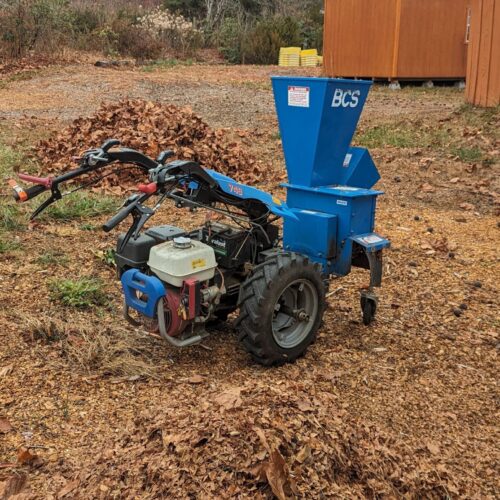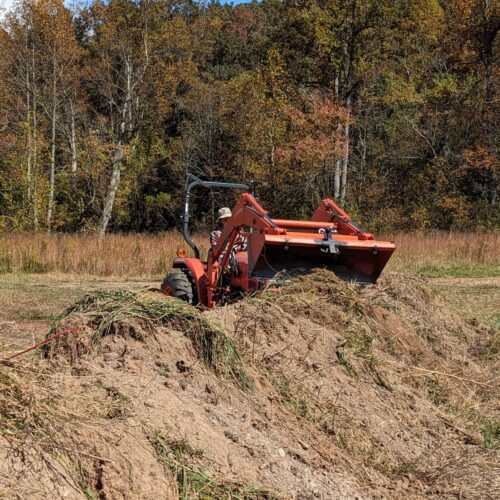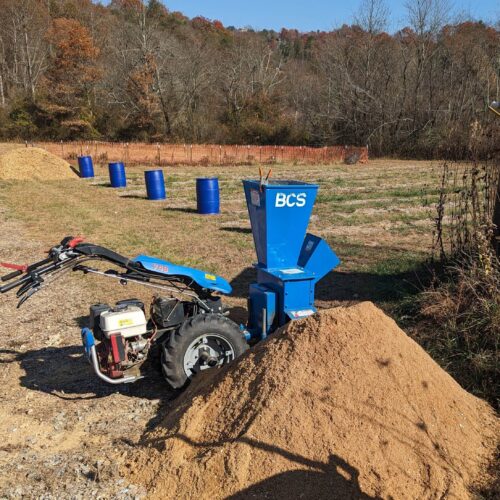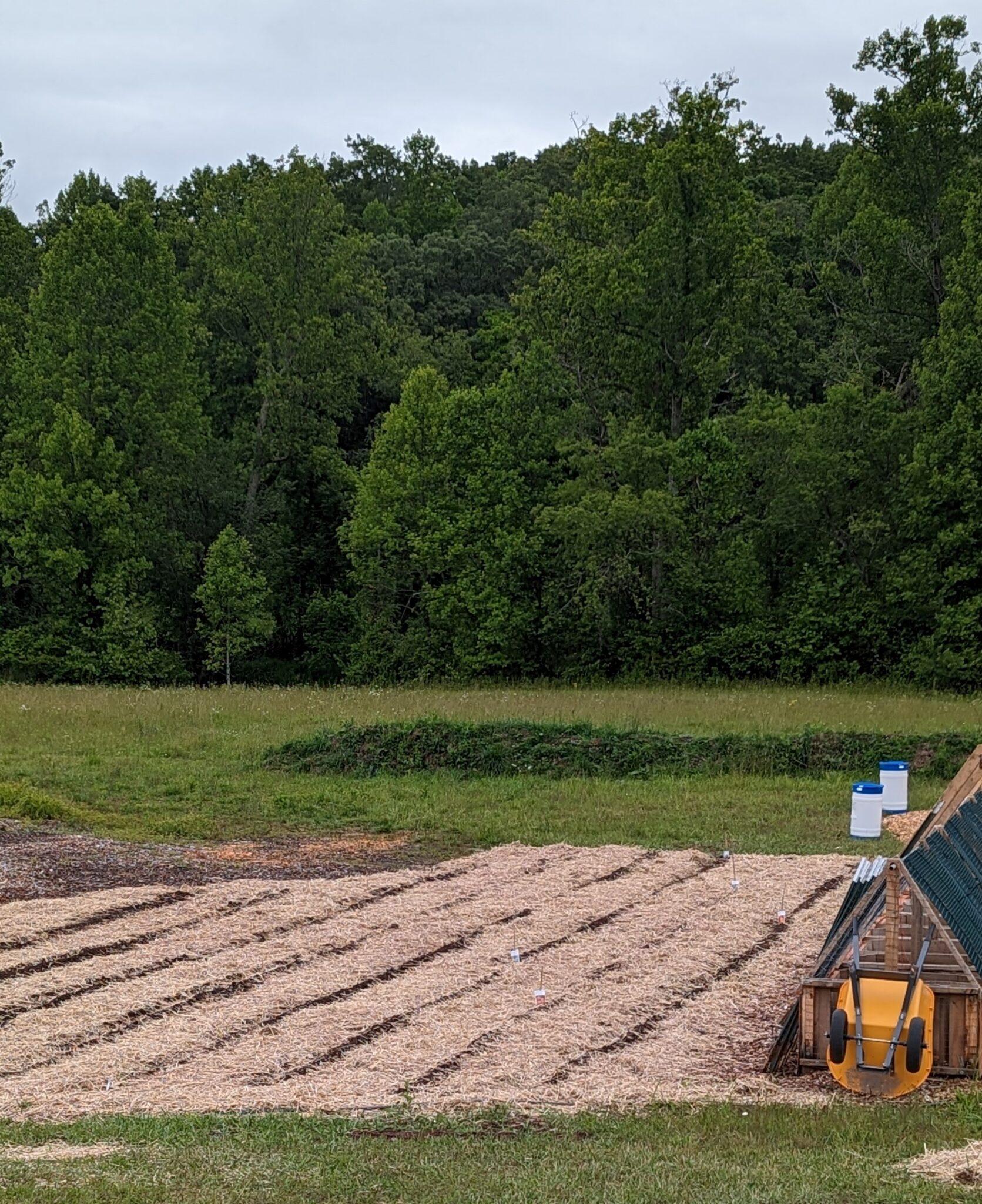Fall is a great time to condition the earth. Whether you are amending a vegetable garden, flower bed or lawn, the techniques that follow will help make your landscape more resilient against the vagaries of climate.
The model for amending the soil is derived from the natural system. The fall is named after leaf drop from trees. In woodlands, the dropped leaves accumulate to be broken down by microbes, generally saprophytic fungi. Over time, a surface organic layer builds that is incredibly biologically active. A similar process occurs in turf, except that the breakdown of the biomass is facilitated primarily by bacteria and actinomycetes.
Rather than bag fallen leaves, compost them for a rich source of leaf mold. Fallen leaves are high in carbon and relatively low in nitrogen, so the breakdown is inherently slow. To speed things up, run a mulching mower over the fallen leaves to create a greater surface area for the microbes to go to work. If the leaves are dry, spray them down to cut down on dust and provide the fungi with adequate moisture for them to get to work. Better yet, if you have a chipper/shredder, the process goes quicker! Use the leaf mold much like you use a standard mulch. The difference is that it works best in beds that you work regularly, such as vegetable and flower beds. After planting, add a one-to-two-inch layer over the entire planting bed. The mulched layer will both reduce water loss and cool the soil. The best part is that you are only recycling the fallen leaves, reducing your carbon footprint, and its free!


Leaf mold is qualitatively different from compost. It provides organic matter to the soil, but doesn’t provide much in the way of nutrients. For that, you will need to compost and amend your soil with compost. The only rule with using a finished compost is that it is in fact, finished. That is, the raw materials are broken down to their natural end product: humus.
However, there is a technique of sheet composting which essentially involves adding the compostable materials directly into the bed. Generally, you create a furrow, add the raw materials, cover over, and if dry, water in. I am not a big proponent of sheet composting; my preference is to compost within a (3 feet diameter) wire bin located within the garden area. The fenced in area ought to be 4 feet high. Add your materials (we throw in weeds and kitchen scraps) and pile to the top. The mass is high enough to heat up, and expedite the composting process. In between layers of weeds and kitchen scraps, add some garden soil. This is the inoculant to jump start the decomposition process. Composting is a aerobic process, so I recommend building the pile around a central PVC pipe with holes drilled through at intervals to facilitate air flow. The process is the process of respiration, which is the utilization of carbon in the form of complex carbohydrates (including cellulose) in the presence of oxygen to yield energy, heat and moisture.
The formula is: CH2O + O2 → H2O + E.
If you make a lot of compost, as I do, you may consider building a windrow, which is an elongated compost pile.

Scaling up to the windrow, you will need larger equipment to turn the pile, such as a tractor with front loader.

When the compost is fully decomposed to humus, add a 1-2 inch layer as a top dressing to new and established plantings. There is no need to turn it into the soil, unless you are adding it to the bed prior to seeding. If that is the case, then shallow till (harrow) to create the seed bed. Avoid deep tilling as that will bring up buried weed seeds, creating a lot more maintenance come summer. In fact, I recommend adding a 3-4” mulch to the bed. Depending on the type of planting and slope of the land, you may choose to use woodchips, wheat straw or pine straw. The straws are stable on sloping grades. Use woodchips on ground that is relatively level or has a minimal slope. The choice of using woodchips over bark chips has to do with composition. Woodchips, as the name implies is composed of cellulose and lignin that break down into organic matter. Bark chips, on the other hand are comprised of suberin, or cork, which does easily decompose. Woodchips are biologically active whereas bark chips are in essence, inert. Decomposition is essential to soil improvement.

In addition to some of our “home grown” compost, we source mushroom compost from a local indoor vertical farm. This compost is comprised of a blend of oak, soy, and oats and is incredibly biologically active. The oak and oat fractions provide a carbon source, and the soy (a legume) is the nitrogen source. Microbes thrive on materials that have a carbon to nitrogen ratio of approximately 20: 1. As opposed to horse or cow manure, it is weed-free and retains its nutrient value.

In summary, composts enrich the earth and support beneficial soil microbes. Fungal microbes (mycorrhizae) mine the soil for essential nutrients such as phosphorous, and supply these to the plant to which it is associated. Free living soil bacteria and nodule forming bacteria (rhizobia) fix nitrogen from the atmosphere or convert it to usable and absorbable forms (nitrate, ammonium) for plant growth. Keeping the soil healthy will go a long way to supporting the plant growth promoting microbes that are antibiotic to disease causing organisms, another reason to amend the earth with compost. In the absence of disease causing soil pathogens, garden plants take off!


